Poznań 2023-01-22
Hipolit Cegielski Factory Poznań.
Geographic coordinates: 52.381N 16.907E. Elevation 78 m. Hipolit Cegielski Factory Poznań. Address: June 28, 1956, 223/229, 61-485 Poznań.
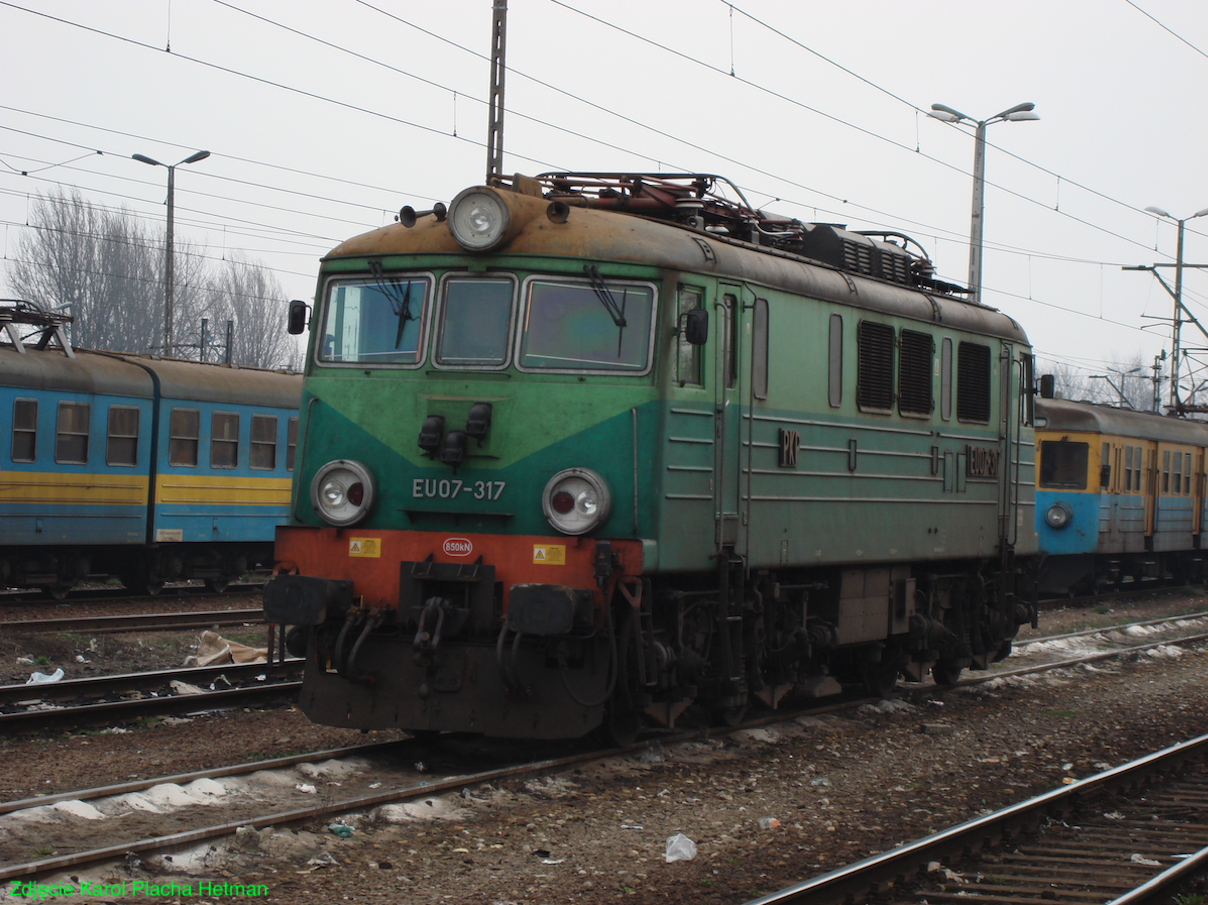
Photo description: The EU07-317 electric locomotive was built in HCP in 1984, with factory number 303E-217/1984. The locomotive was operated in the Kraków Prokocim locomotive depot.
Until 1939, the HCP factory was a company. In the period 1946-1995, it was a state-owned company. Since 1995, the plant has been a joint-stock company with the leading share of the State Treasury.
In 1846, Mr. Hipolit Cegielski opened a store called Handel Żelaza in Poznań in Bazaar on Nowa Street. In 1850, a repair shop for agricultural tools was established in the yard at Butelska Street. In 1855, a factory was established at Kozia Street as a metal workshop repairing agricultural machines and tools, and then a production plant. In 1859, the plant moved to Strzelecka Street, where a steam engine (locomotive) and a foundry were launched. In 1860, the factory began producing locomobiles. Mr. Hipolit Cegielski died in 1868, leaving a dynamically developing factory that was constantly expanding its offer. In 1870, the expanded factory already employed 300 workers. In 1880, the company was taken over by Hipolit's son, Mr. Stefan Cegielski, who named the plant "H. Cegielski Agricultural Machines and Equipment Factory in Poznań".
In 1889, due to financial problems, the factory was transformed into a joint-stock company under the name "H. Cegielski Joint Stock Company in Poznań. This decision developed the company. In the period 1910-1914, most of the production was moved to newly built plants on Główna Street. In 1917, the plant employed 500 workers. The Great World War was a period of good economic conditions for the factory.
In independent Poland.
In 1919, the company bought the land of the bankrupt Julius Moegelin factory in Wilda and the neighboring Paulus plant and the "Thermoelektromotor" factory. In 1920, the land of the Lesser brothers' factory was purchased. The factory remains on this site to this day (2024). The company was divided into branches. The former Paulus factory was a wagon and locomotive factory, and the former "Thermoelektromotor" factory repaired steam locomotives. In 1923, plants producing agricultural machinery were merged into one branch. In 1923, the production of electric trams began and the company already employed 4,500 employees. In 1923, on the anniversary of the company's founding, the trademark used to this day was introduced; circle with the letters HCP.
In 1927, the company was renamed "H. Cegielski Spółka Akcyjna in Poznań. The crisis of the 1930s affected the company, whose turnover decreased fourfold. Just before the outbreak of World War II, a new branch was established in Rzeszów, the current company Zelmer SA. Its construction began in April 1937, on the site of the former Mars company, and the first machine tools were produced in December 1937.
In 1921, the company started building rolling stock in Poznań. Initially, these were coal wagons, covered wagons and rail transport platforms. Then, the production of special wagons was started: mail, baggage and refrigerated wagons. Over 9 years, the factory delivered 5,515 freight wagons. In 1928, the production of passenger carriages began, and in 1931, motor carriages. In this market segment, competition in Europe was very high. There were factories in the UK, Belgium, Czechoslovakia and Germani. But HCP offered products at the lowest European prices and within the shortest contract execution times.
At the end of the 20th century, rolling stock was the main production of HCP plants. In 1928, the production of passenger cars was launched. In 1930, the plant produced its hundredth copy. The plant also made a special order for 10 dining cars for Paris.
In 1926, the first heavy freight steam locomotive of the Ty23 series left the factory in Poznań. By 1932, 164 copies of this locomotive were built. The Ty23 series steam locomotive was a Polish heavy steam locomotive, which was developed by Polish engineers and produced in the period 1923 - 1934. Ty23 means a freight locomotive with a "y" axis system, which was approved in 1923. The axis system is 1'E, i.e. 1-5-0 (oOOOOO), and the Polish designation is the lowercase letter "y". In Poland, the production of Ty23 locomotives was undertaken by the HCP plant in Poznań. The first locomotive was completed in 1926. This steam locomotive received No. 76. Since the Ty23 steam locomotives were very much needed on the railway, production was also started in Warsaw (WSABP) and Chrzanów (FABLOK). By 1934, 612 Ty23 locomotives were built. 164 units were built at the HCP plant, 106 units at FABLOK, and 267 units at WSABP. Of this number, 106 copies were transferred to the French-Polish Coal Railway Company, which was the owner of the Herby Nowe (near Częstochowa) - Gdynia route, the most important route of the Second Polish Republic.
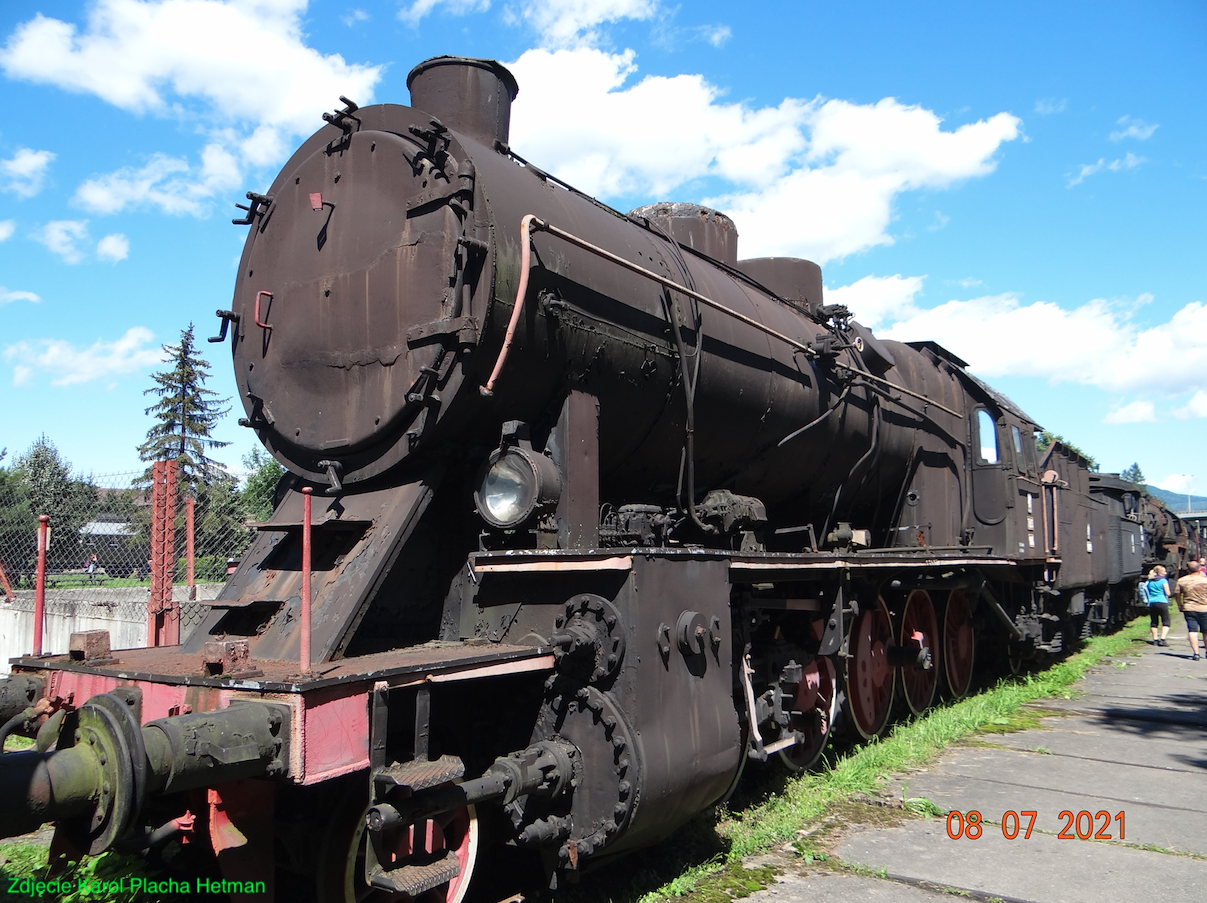
In 1925, the design office of the HCP plant in Poznań began to develop technical documentation for a new tender. In 1927, at the request of the Ministry of Communication, the first completely Polish steam locomotive OKl27 was designed. By 1933, 122 units were produced. The OKl27 steam locomotive is a Polish passenger steam locomotive, Kusy (tender), with the "l" axle arrangement, i.e. 1'C1, approved for construction in 1927. The steam locomotive was intended to serve passenger and light freight trains over short and medium distances. The train speed is up to 80 km/h. The steam locomotive was completely developed and manufactured at the HCP plant.
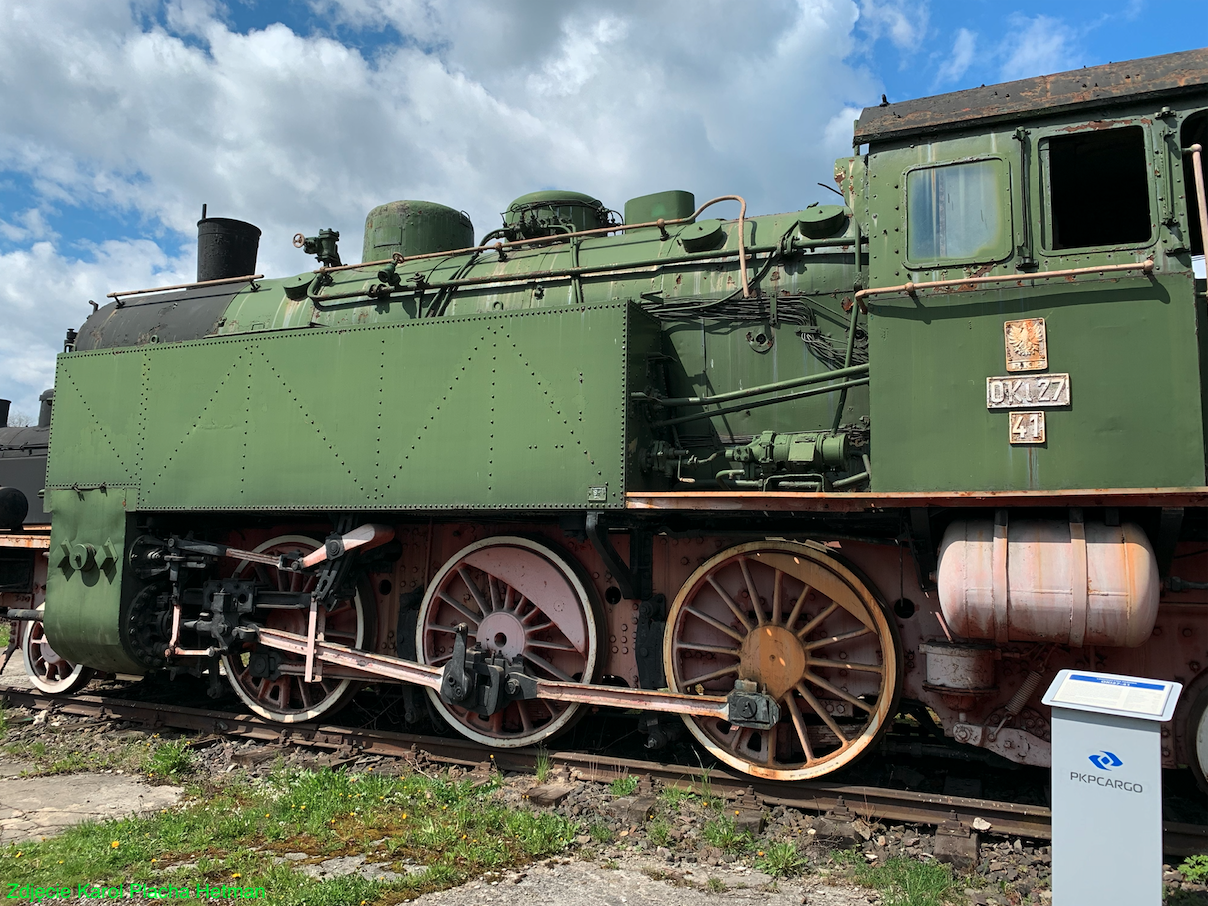
In 1930, the HCP factory placed the first export order for 12 mountain tender locomotives for the Bulgarian Railways. The recipient was very pleased with the locomotives. It was the largest steam locomotive in Europe. Another order for steam locomotives for the Chinese railway was stopped by the Sino-Japanese conflict.
In 1930, the Ministry of Communication ordered 9 steam motor wagons from Zakłady Mechaniczne Hipolit Cegielski, which were built a year later.
The Pu29 locomotive was a series of Polish express steam locomotives built at the H. Cegielski factory in Poznań in 1931. 2'D1' axis system. Empty weight of the steam locomotive: 136,300 kg. Service weight 181,300 kg. Length 15.65 m. Length with tender 24.60 m. Width 3.05 m. Height 4.63 m. Diameter of driving wheels 1.85 m. Diameter of rolling wheels at the front 0.86 m. Diameter of rolling wheels at the rear 1 ,20 m. Tender type 32D29. Boiler pressure 15 at. Superheater area: 86.8 square meters. Grate area: 4.8 square meters. Rated power 1,820 HP (1,338 kW). Maximum tractive force 18,000 kG. Design speed 110 km/h. These steam locomotives were intended to service heavy express trains, in particular Germanic transit trains on the Chojnice - Tczew - Malbork section. These were the largest Polish steam locomotives built before World War II. Despite very good performance, this steam locomotive was too large and heavy for the needs of Polish railways and did not fit on the turntables, so its production was abandoned in favor of the smaller and more universal Pt31 series. In total, only 3 Pu29 units were produced, of which only the Pu29-3 returned to Poland after the war in 1949.
In 1934, the first Luxtorpeda was constructed, and in 1936, the first control and trailer wagons for electric units. In 1937, four light EL.200 electric locomotives were built for the Warsaw Railway Junction and 10 tram cars for the Poznań Electric Railway.
EL.200 was a series of four electric locomotives produced at the H. Cegielski plant in Poznań in 1937 for PKP. All locomotives were directed to serve the Warsaw Railway Junction. Three copies were destroyed in September 1939, the fourth one operated until 1944. The last EL.200 electric locomotive was scrapped in 1958.
The production of passenger motor wagons called Luxtorpeda, SBx series, lasted in the period 1934-1939 and a total of 21 units were built. During production, numerous modernizations and upgrades were introduced to the wagons.
EMU EW51 (pre-war designation E91) was a three-car electric multiple unit adapted to high platforms, produced by the Lilpop, Rau and Loewenstein plants in Warsaw (mechanical part of the motor carriages) and H. Cegielski Spółka Akcyjna in Poznań and L. Zieleniewski in Sanok (part mechanical wagons and trailers) in the period 1936–1939. The electrical equipment was provided by English Electric Co Ltd. The vehicles were intended for suburban traffic in the Warsaw agglomeration. Before the war, the units were divided into Class 2 and Class 3 compartments. A total of 76 units were produced.
The OKz32 steam locomotive is a Polish passenger steam locomotive adapted to serve mountain railway lines. It was produced for PKP in the number of 25 copies in the period 1934–1936, by Zakłady Mechaniczne H. Cegielski in Poznań, commissioned by the Ministry of Communication, especially for servicing the Kraków-Zakopane railway line. The locomotives remained in line service until the 1970s. Currently (2024) one copy is operational.
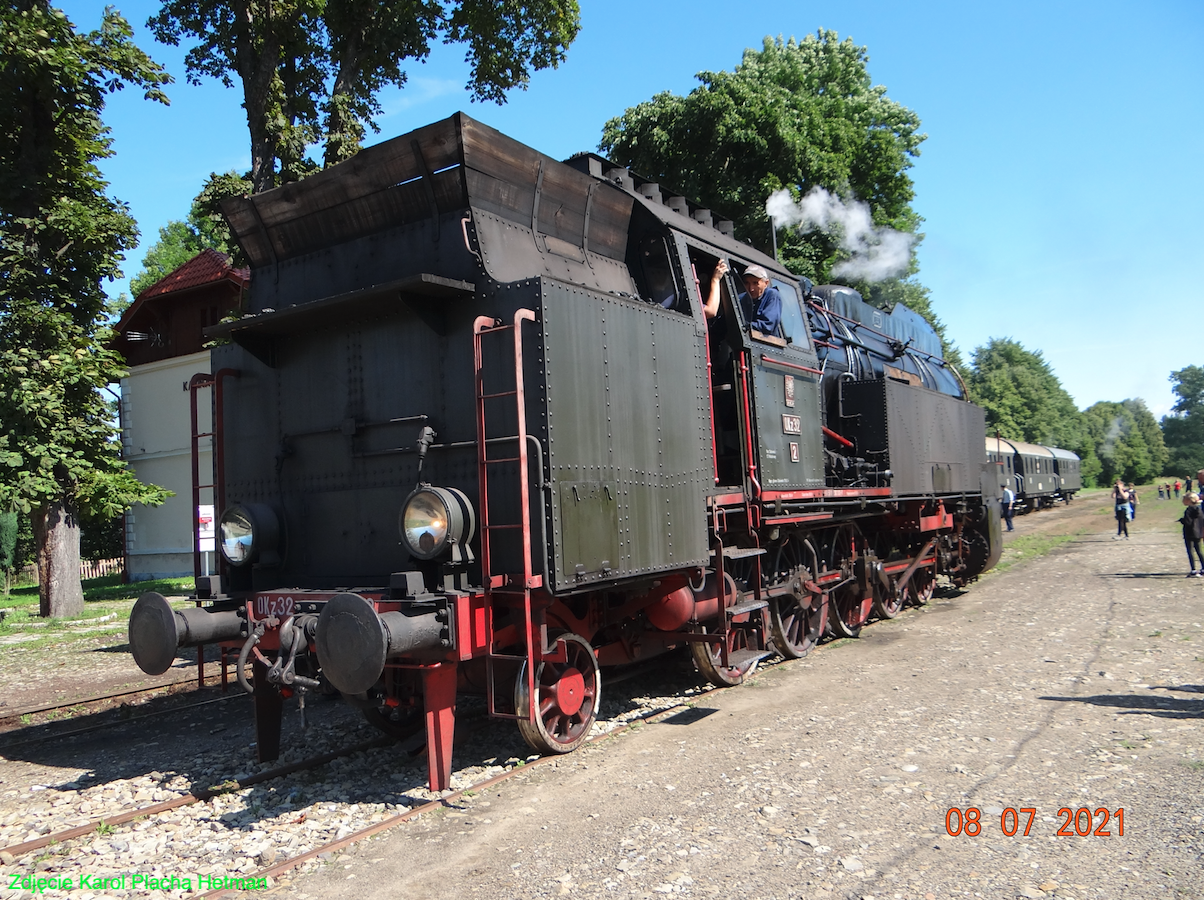
Ty37 steam locomotive. The Ty37 series steam locomotive is a heavy steam locomotive of Polish design and production. Ty37 refers to a 'y' axle freight locomotive which was approved in 1937. The axis system is 1'E, i.e. 1-5-0 (oOOOOO), and the Polish designation is the lowercase letter "y". 37 units were built at HCP plants.
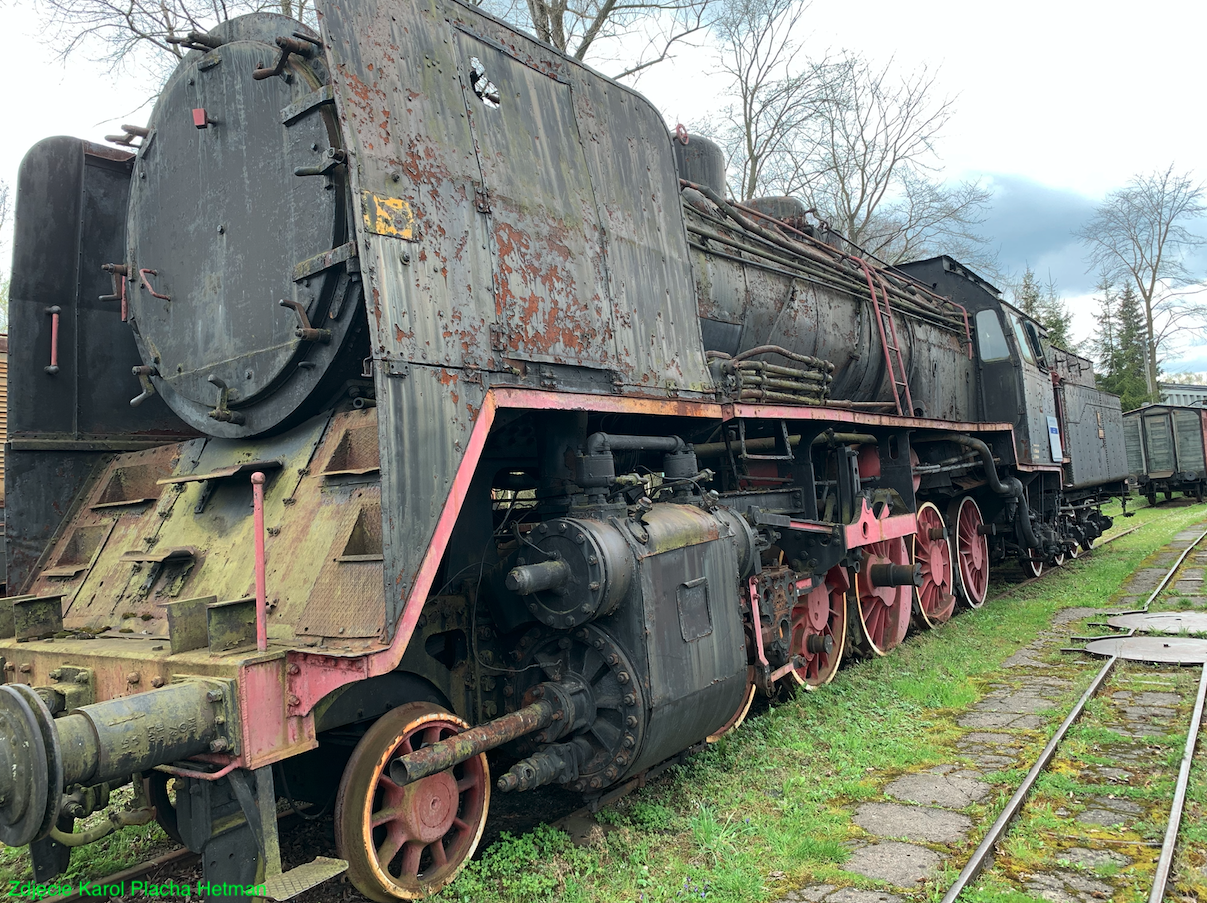
In 1939, stupid Germans and their Muscovite brothers started World War II. After the occupation forces entered, the plant in Poznań was confiscated and on November 1, 1939, sold to the Deutsche Waffen und Munitionsfabriken (DWM) concern. The Germans changed the name of the HCP factory to DWM Posen. The entire production of the factory went to war needs; locomotives, motorcycles, bicycles, ammunition, gun carriers, spare parts for tanks, planes and submarines. During the war, 522 Ty2 type steam locomotives were produced, as well as four Tr7 type steam locomotives. These steam locomotives were initially intended for export to Asia. The Poznań plant suffered damage in two Allied air raids; in 1941 and April 1944. In the fall of 1944, the Germans began to evacuate the factory to the West. The evacuation was completed on January 22, 1945, and the halls were devastated; without windows and doors, with the water and electrical installations torn out.
After World War II.
On January 28, 1945, the Soviet army entered the plant. On February 8, 1945, the Soviets handed over the plant to the Provisional State Board. Already on February 12, 1945, the plant's employees started production. Initially, the renovation of wagons was undertaken. Pursuant to the Act on the Nationalization of Industry, passed on January 3, 1946, the company was now directly subordinated to the central industrial management board in Warsaw. In 1946, the plant was named Zakłady Przemysłu Metalowego H. Cegielski Poznań. It included a wagon factory, which was named Fabryka Wagonów HCP. In 1946, the production of railway wagons began at HCP.
The Ty2/Ty42 series freight locomotive was produced in Poznań in the period 1943-1946. This period is divided into the production of 367 copies for the Germans during the occupation and 83 copies for the Polish State Railways after World War II.
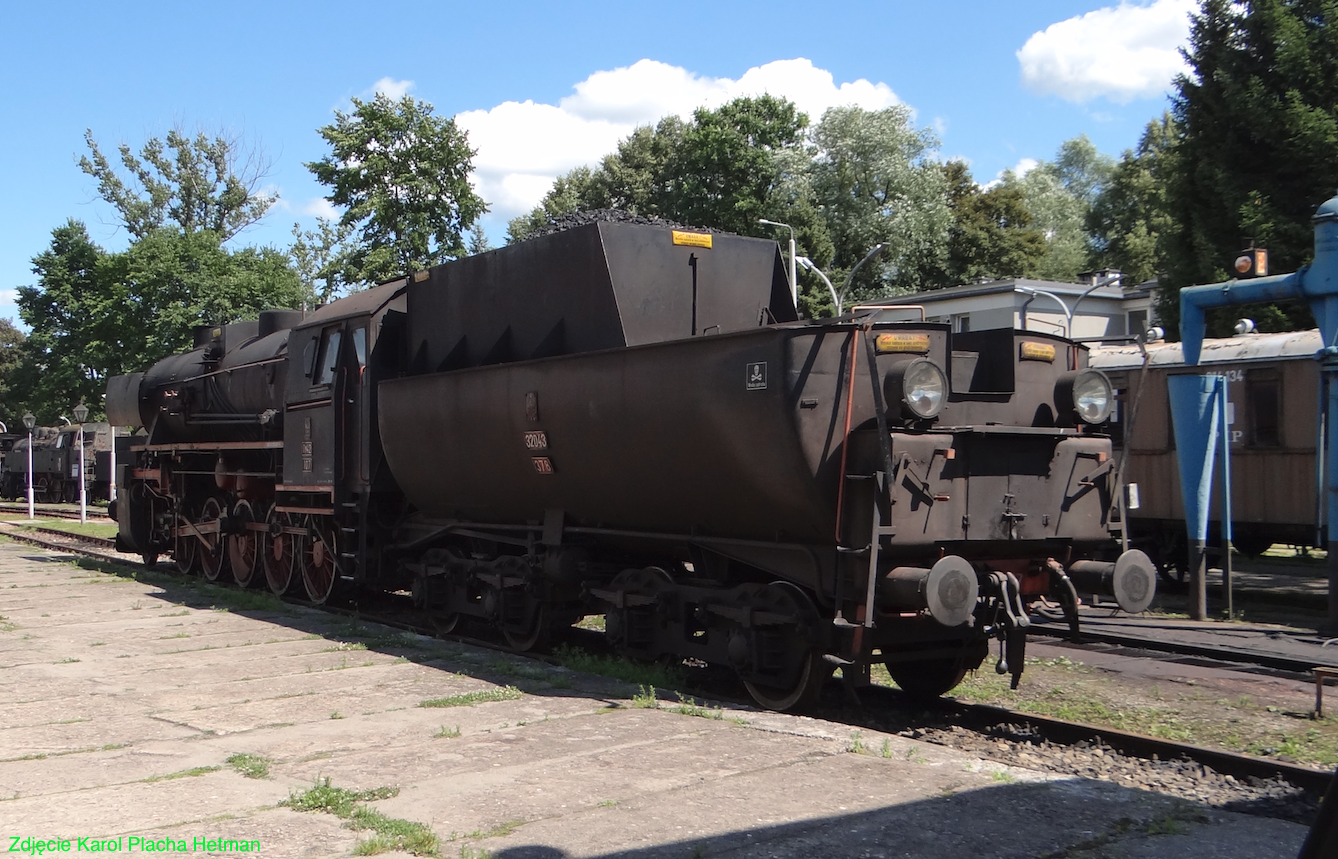
The Ty45 steam locomotive is a Polish heavy steam locomotive intended mainly for heavy freight trains. Ty45 was developed at the HCP factory in Poznań. Ty45 steam locomotives were produced in HCP and FABLOK. Production lasted in the period 1946 - 1951. Axle system 1'E (1-5-0 or oOOOOO), Polish designation with the lowercase letter "y". The production of the Ty45 steam locomotive began in 1946 at the HCP and FABLOK plants. 258 units were built in Poznań and 170 units in Chrzanów. By 1951, a total of 428 Ty45 locomotives were built. Of this amount, 20 locomotives were donated to industrial railways, and the rest went to PKP.

Passenger wagons built in 1946 were produced at HCP in the period 1950 - 1959, as well as at ZNTK Ostrów Wielkopolski. The last type 108A carriages were produced there, i.e. a Class 2 carriage with nine compartments, soft seats and electric heating.
Fast steam locomotive Pt47. The Pt47 locomotive is a Polish express steam locomotive of Polish design, produced in the period 1948–1951 for PKP. The steam locomotive is modeled on the Polish pre-war Pt31 steam locomotive. The production of Pt47 steam locomotives took place at FABLOK in Chrzanów and at HCP in Poznań. A total of 180 steam locomotives were built.
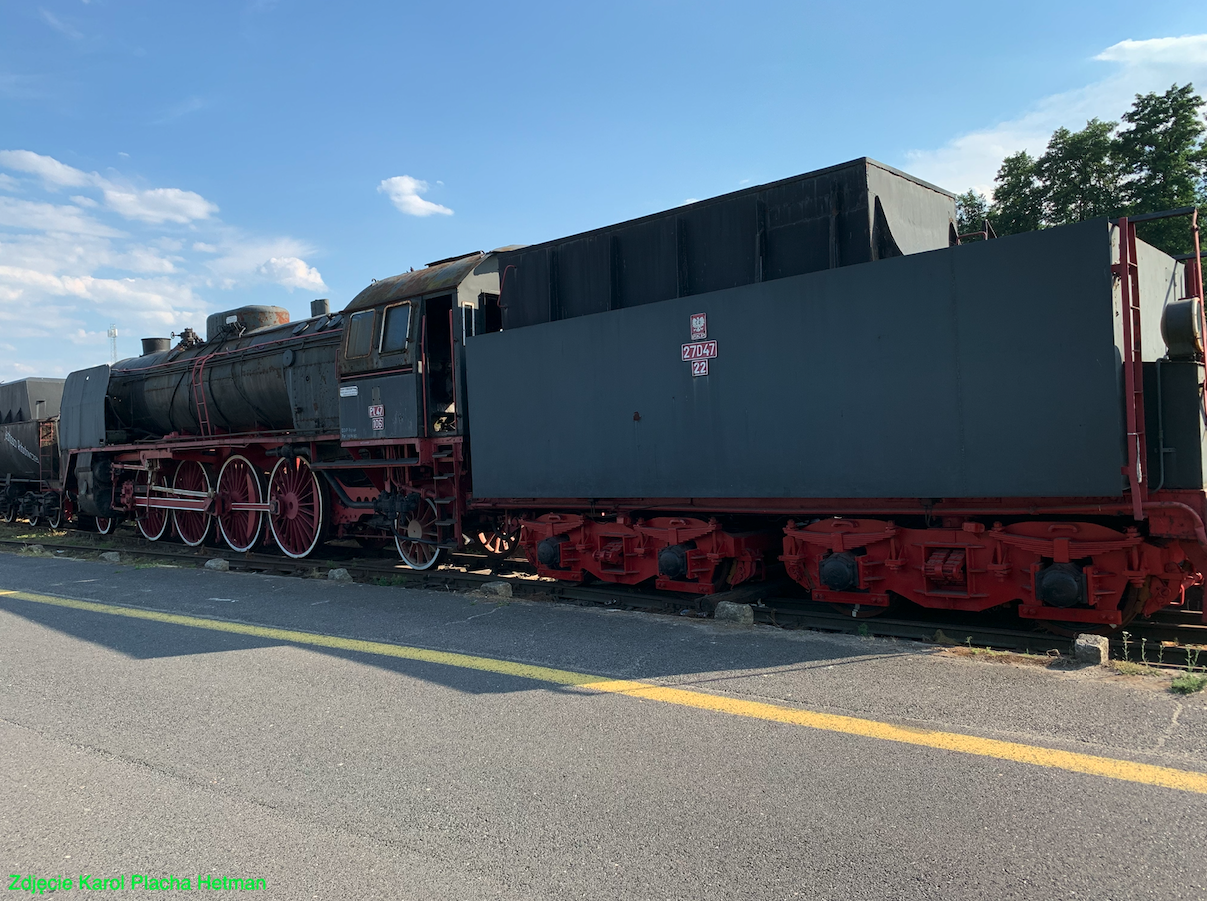
In 1949, the company name was changed to Zakłady Metalowe im. Józef Stalin in Poznań (ZISPO). On June 28, 1956, the factory's employees took part in the Poznań Uprising, which is known as Poznań June 56. Then the name HCP was restored; "H. Cegielski Metal Industry Plant in Poznań, State Enterprise."
By 1950, over 500 wagons were built for the Polish State Railways, mainly coal wagons. In the period 1950 - 1960, the factory built 2,846 different freight and passenger cars for CCCP.
The TKt48 series steam locomotive was developed immediately after World War II at the FABLOK factory in Chrzanów. TKt48 series steam locomotives were produced in the period 1950 - 1957. PKP bought 191 copies of these locomotives. TKt48 locomotives were built at the HCP factory, where 94 units were built, and at the FABLOK factory, where 115 units were built. 6 locomotives were exported to Albania. The locomotives were built from elements typical of other series of steam locomotives, which made their repairs easier. The steam locomotive was equipped with electric lighting and air brakes of the Westinghouse or Knorr system with a 3-cylinder compressor.
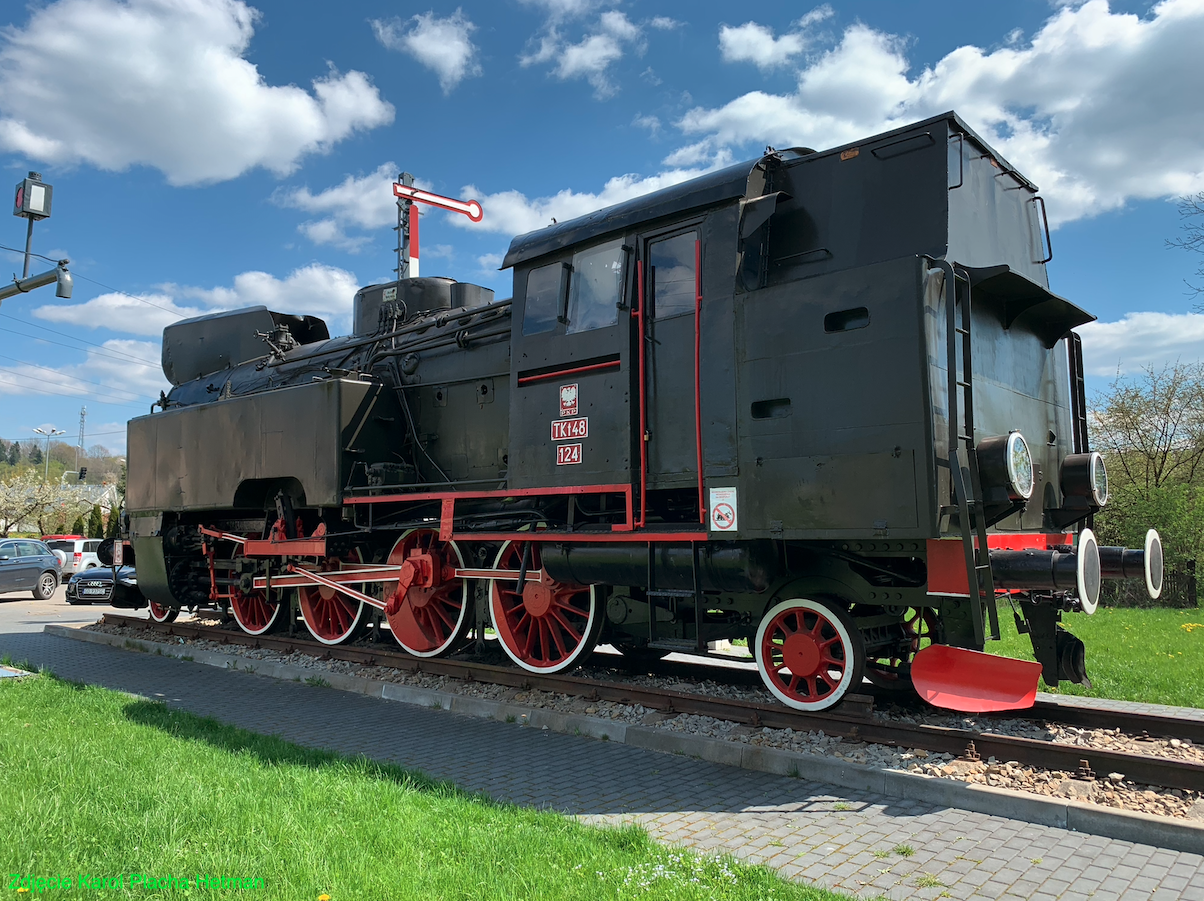
The Ty51 steam locomotive is a Polish heavy steam locomotive intended mainly for heavy freight trains. Ty51 was developed at the HCP factory in Poznań. The Ty51 steam locomotive was produced in the period 1953 - 1958 at the HCP factory in Poznań. The Ty51 steam locomotive was the heaviest and most powerful Polish steam locomotive. Axle system 1'E (1-5-0 or oOOOOO), Polish symbol with lowercase letter "y". 232 examples were built.

In 1956, a license to build marine engines was purchased from the Swiss company Sulzer-Brothers. Another license was purchased in 1959, from the Danish company Burmeister&Wain. In 1958, at the H. Cegielski Metal Industry Plant in Poznań, for the first time in Poland, an internal combustion engine was designed and manufactured, initiating the development of a new industry in Poland. In 1960, the Ministry of Heavy Industry ordered the construction of a new factory in HCP, which was to produce medium-speed diesel engines; for generating sets, locomotives and small ships. On May 1, 1963, a new organizational unit of ZPM H. Cegielski was established under the name "Agregate and Traction Engine Factory" (FSA). The launch of production and recruitment of employees began on October 1, 1963. Production included 4-stroke diesel engines for use in marine vessels, stationary generating sets and railway traction engines.
In 1958, the production of steam locomotives was ended in Poznań.
In 1960, HCP built several prototypes of SN80 engine cars, but due to the cessation of imports of hydro-kinetic transmissions, production was stopped. In the period 1960-1964, tests and trial operation of SN80 motor wagons were carried out. A total of 13 units were built.

In the period 1955-1962, type 43A passenger cars were built, and in the period 1962-1964, type 101A "Ryflak" passenger cars were produced. In Poznań, the production of subsequent types of passenger cars continued in 2015. The most numerous passenger cars were produced: 104A, 111A, 112A, 113A, 136A.
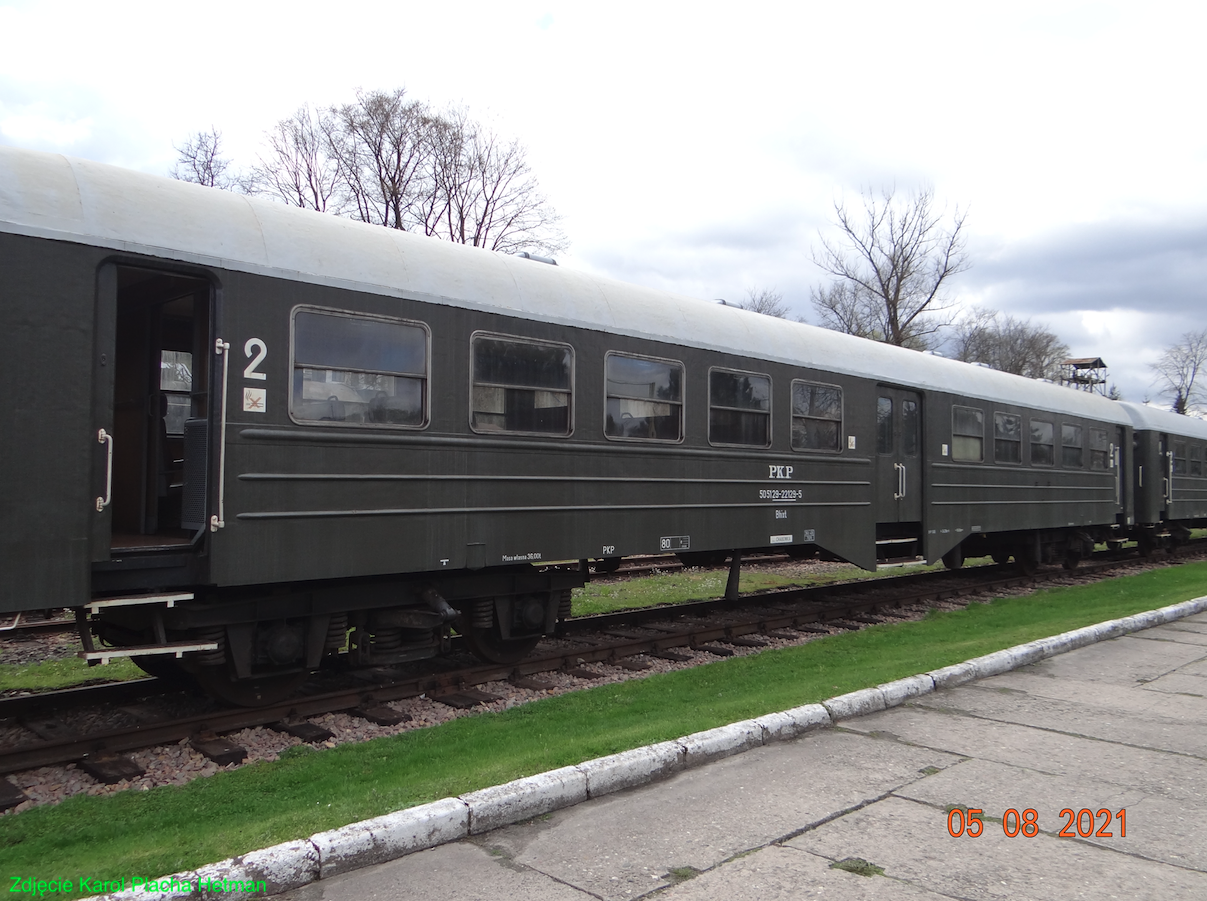
In 1967, the plant was renamed the Locomotive and Wagon Factory. This was related to the start of production of type 301D diesel locomotives, which were marked SP45 (SU45) in PKP. Then there were SU46 and SP47.
HCP type 301D series SP45 / SU45. In 1967, the HCP factory in Poznań built a prototype of the 301D type locomotive of the SP45 / SU45 series. Between 1967 and 1976, 270 units were built. Initially, PKP locomotives were marked SP45 (diesel passenger locomotive). The changes made to the locomotives resulted in the change of the designation to SU45. The locomotives operated on non-electrified routes with passenger and freight trains. In dialect, the locomotives were called FIAT due to the origin of the engine.
HCP type 303D series SU46. The SU46 locomotive was developed at HCP in Poznań in 1974. The locomotives were produced in the period 1974 - 1977 and two locomotives in 1985. The locomotive is a development of the SU45 design. A total of 54 SU46 locomotives were produced. Production was interrupted at the request of the authorities, because they were ordered to buy locomotives from CCCP ST44 (M62).
HCP type 302D SP47 series. The SP47 locomotive was developed at the same time as the SU46 locomotive. The prototype of the SP47 locomotive was built in 1975. In the period 1975 - 1977, only 2 locomotives were built. Factory designation type 302D.
HCP type 203E, ET41 series. The ET41 locomotive is a standard-gauge, two-unit electric freight locomotive. The locomotive was produced between 1977 and 1983 at the HCP plant in Poznań. 200 examples were built. The locomotive is popularly called "Dachshund". The locomotive was developed at the HCP factory in Poznań. The basis for developing the locomotive was the EU07 electric locomotive, by combining two electric locomotives into a set. The project in Poznań was marked HCP 203E, and in PKP it was type ET41.
Based on the ET41 locomotive, HCP re-developed the EU07 single-unit electric locomotive. The new EU07 locomotive, type 303E, was developed on the basis of the two-unit ET41 locomotive, type 203E, which was derived from the type 4E locomotive. The production of EU07 locomotives, type 303E, was carried out in the period 1983–1993. A total of 243 locomotives of type EU07, type 303E were built. They received No. 301-543. There are no EU07 locomotives with numbers 245-300. The new EU07, type 303E, has many modifications that increase its service life and reduce its failure rate. The number of places that required frequent lubrication was reduced. Metal-rubber connections were introduced, which improved the locomotive's running comfort. The structure of the box has been changed. A self-supporting box with grooved side walls was used. These grooved walls are the distinguishing feature between the 4E and 303E locomotives. One ventilation grille was removed from the side wall of the machinery room, the first on the left side looking in the direction of travel. A full flat sheet of metal was left between the windows, which was grooved halfway through production. Larger blades (scrapers) were also installed under the headstock. The new locomotives were adapted to install a Soviet automatic coupler. In the period 1983-1992, 242 serial pieces of EU07 type 303E locomotives were built.
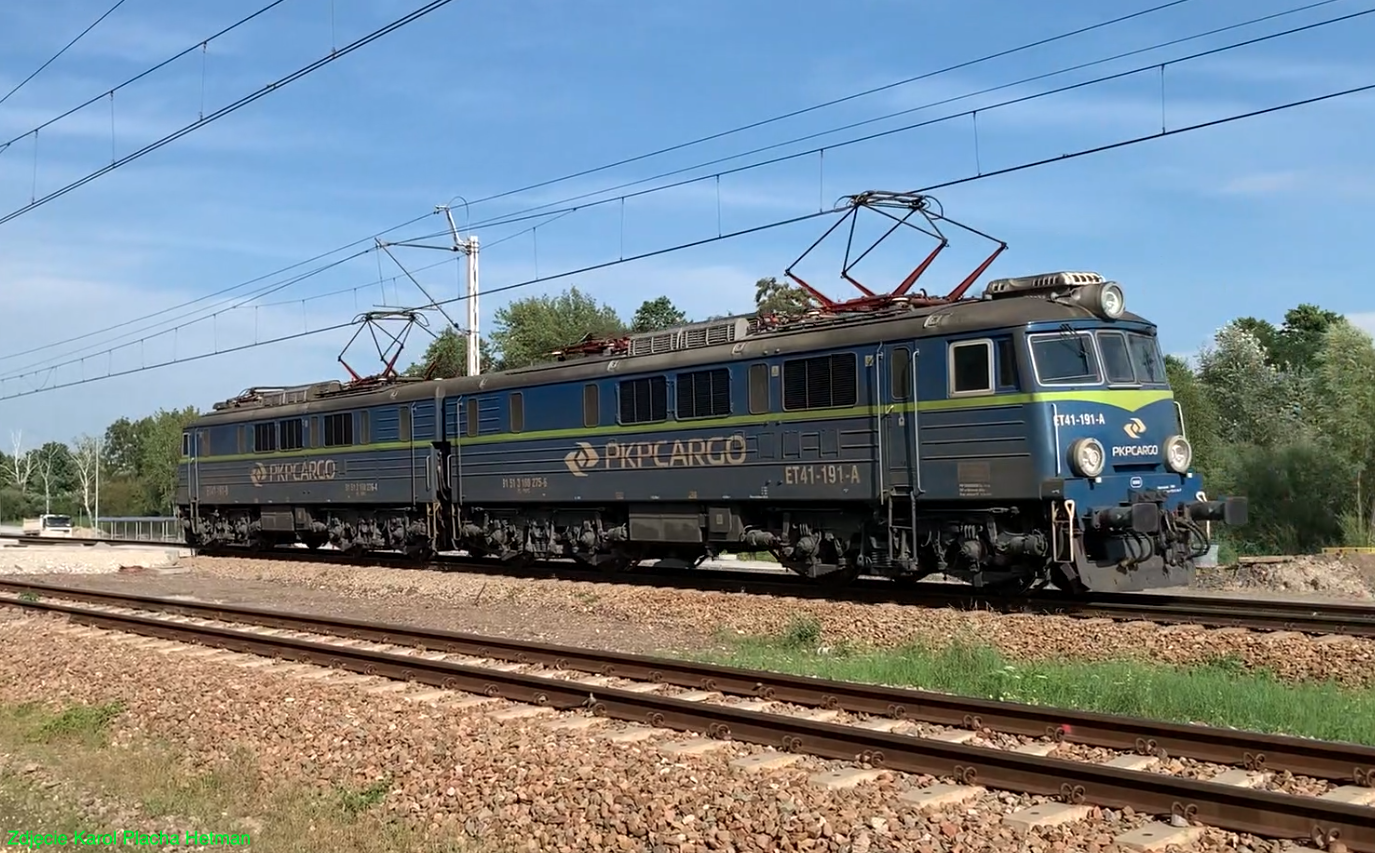
The PKP EM10 electric shunting locomotive, HCP 405E (type 405E, 405Ea and 405Em, PKP EM10 series), was also developed in Poznań. In the period 1990–1991, four prototype locomotives were built and incorporated into the PKP fleet. After the division of PKP, the EM10 series vehicles were handed over to PKP Cargo. In 2004, all locomotives were modernized at ZNLE Gliwice. In fact, there was no work for the EM10 locomotives because most of the shunting tracks at the stations are unelectrified.
In 1995, the company was transformed into a State Treasury company called H. Cegielski Poznań S.A. In the period 1996–1999, as a result of structural changes, several subsidiaries were separated. Some of them were taken over by other companies, and others became independent. Since 2012, the HCP S.A. group consist of 4 companies. In March 2010, the group was left by H. Cegielski - Fabryka Pojazdów Szynowych, which was taken over by the Industrial Development Agency. On March 26, 2010, the Industrial Development Agency took over 100% of the company's shares, thus becoming its sole owner.
On January 1, 1999, as a result of organizational changes, the company H. Cegielski - Fabryka Silników Aggregatowych i Trakcyjne Spółka z o. o. was established, which took over the previous production and service activities in the field of four-stroke diesel and gas engines. In December 2011, H. Cegielski - Fabryka Silników Aggregatowych i Trakcyjne Sp. z o. o. was privatized.
In April and September 2015, Przewozy Regionalne sold a total of 20 EN57 EMUs to Polski Tabor Szynowy.
On February 27, 2018, PKP Intercity signed a contract with Fabryka Pojazdów Szynowych for the supply of 55 passenger cars with an option for an additional 26 cars.
Written by Karol Placha Hetman
